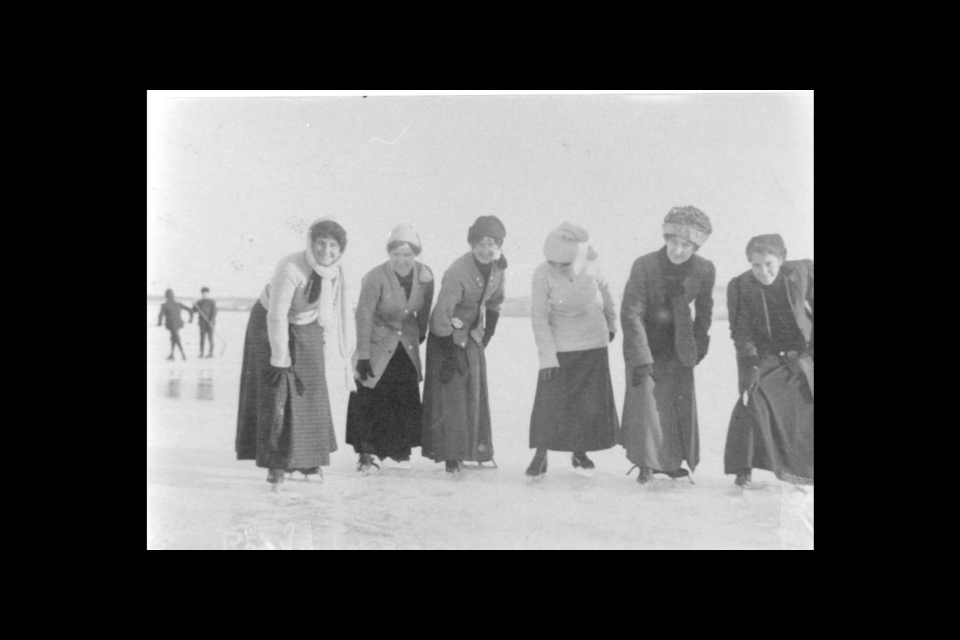There are few winter pastimes as quintessentially Canadian as ice skating. As with communities across the nation, skating has long been a part of Bradford’s winter culture.
Ice skating originated in Scandinavia 2,000 years ago. The first skates were made from the shank or rib bones of elk, and the word ‘skate’ likely derives from the old Norse word skankr and old English scanca, meaning shank. Norse settlers introduced skating to Britain.
Queen Victoria’s husband, Prince Albert, was an accomplished skater and he persuaded her to join him. Queen Victoria and Prince Albert were the influencers of the day, and consequently the public embraced ice skating as never before. This was true as much in Canada as in Britain.
For residents of early Bradford, ice skating represented one of few escapes from the drudgery of long winters. In an era when Victorian morality frequently separated the sexes, ice skating was seen as an acceptable recreation for men and women alike and, as a result, it became an important social pastime. Skating parties were held with bonfires, tents for refreshments, and bands playing music. Children and ladies who couldn’t skate were provided with sledges to sit on and be pulled around the ice.
Victorian skaters not only dressed for warmth and comfort, but also presented style and elegance in their winter attire: ladies in billowing crinolines, feathered bonnets, shawls, and hands tucked inside muffs; men sporting coats, flowing capes, waistcoats, top hats, and leather gloves.
By this time, the bone skates of yesteryear were long gone. The 1850s saw the widespread adoption of steel blades that were fastened with screws and clamps to the wearer's boot. In 1861, John Forbes of Dartmouth, Nova Scotia, patented the first spring-skate, which could be placed on footwear without screws and plates. By the end of the century, skates with blades permanently attached to the boot were available.
At first, people skated on frozen ponds and the frozen surface of the Holland River. Then, in 1910, Thomspon Fisher built a large ice-skating rink at the southeast corner of Moore and John streets. It represented the forebearer of our modern rinks.
Skating is still popular today though it is no longer the social event, a festival on ice if you will, that it was in earlier times.



